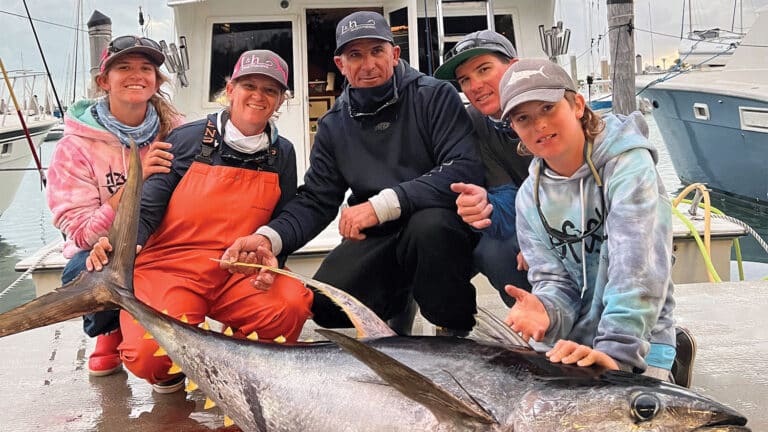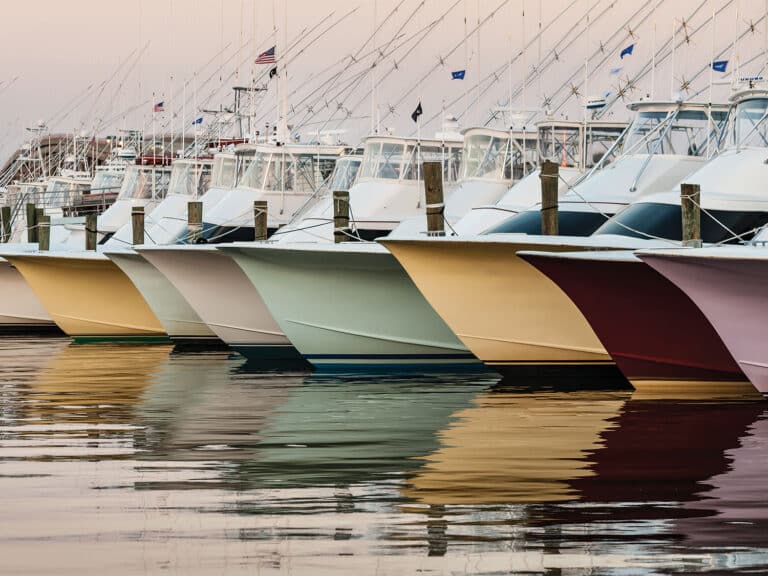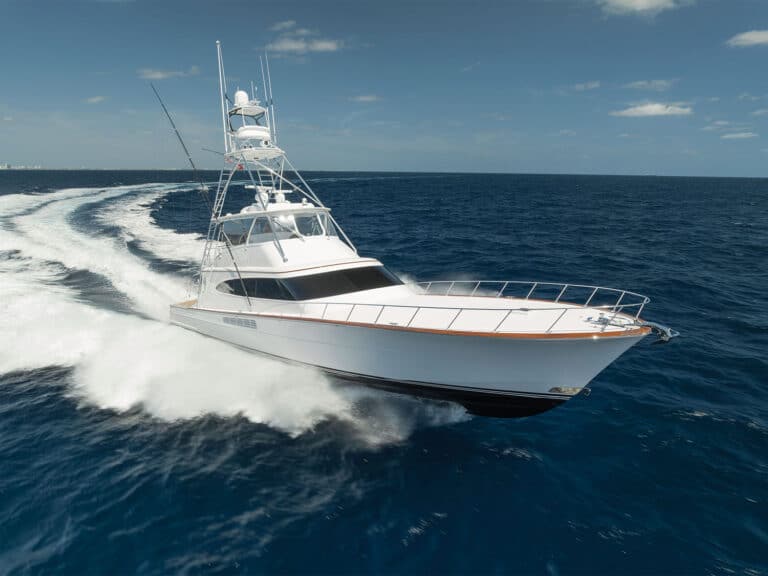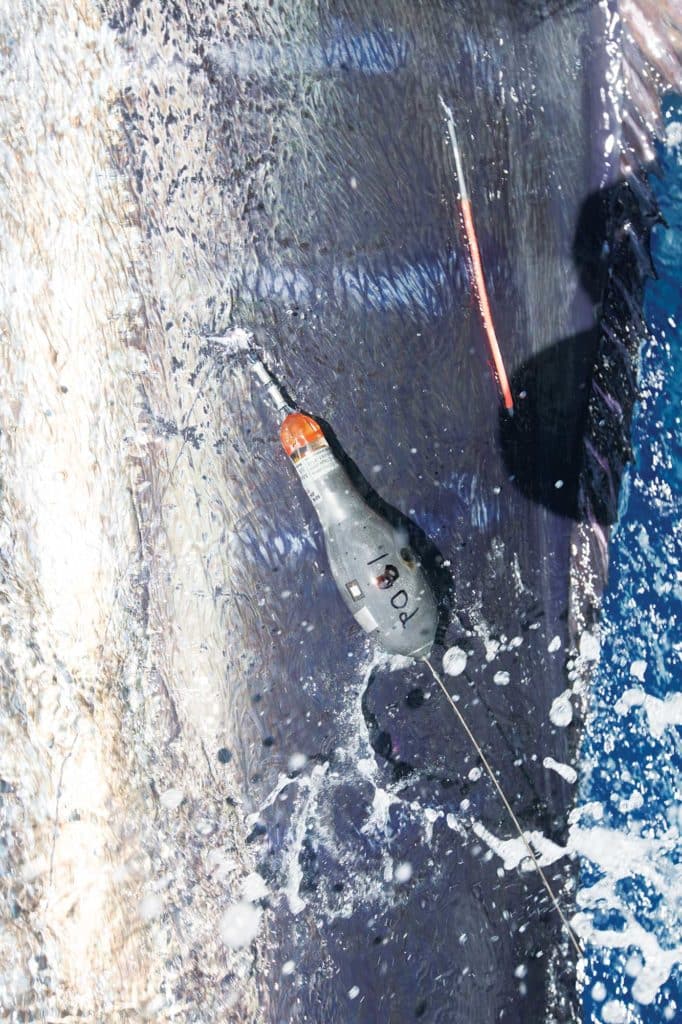
Over the past several years, the IGFA Great Marlin Race has documented some incredible blue marlin movements using satellite tags. This partnership between the IGFA and Stanford University pairs recreational anglers with cutting-edge satellite-tagging technology to gain more insight into the ecology and migratory behavior of billfish. During an IGMR tagging event that took place in San Juan, Puerto Rico, in 2011, a blue marlin traveled an amazing 4,776 nautical miles before the tag popped off near the coast of West Africa — and that’s just the linear distance from the point from where the tag was deployed to where the tag popped off. The actual track was much longer, but what’s most incredible is that the fish traveled that distance in a mere 120 days. Another IGMR-tagged blue marlin traveled from the western Indian Ocean around the Cape of Good Hope into the Atlantic.
Most Marlin readers know blue marlin are tropical critters with a preference for warm waters, but other factors influence when and where they might travel. A recent paper published in Fisheries Oceanography and authored by Stanford researchers working with IGMR data sheds new light on how prevailing El Niño Southern Oscillation conditions affect a blue marlin’s ability to undertake transequatorial migrations in the Pacific.
Marlin tagged off Hawaii consistently migrated south/southeasterly, often crossing the equator.
The authors analyzed data from tags that were deployed over five years (2009 to 2013) at IGMR events held at the Hawaiian International Billfish Tournament as well as tags that were deployed in French Polynesia in 2013. Overall, they found that marlin tagged off Hawaii consistently migrated south/southeasterly, often crossing the equator to the vicinity of French Polynesia. That is, every year except 2010 — which happened to be a La Niña event — when no tagged marlin crossed the equator.
La Niña events are the polar opposite of El Niño, where exceptionally strong trade winds produce an extreme upwelling in the eastern and central equatorial Pacific. This upwelling causes uncharacteristically cool sea-surface temperatures and also causes a shoaling of the oxycline and thermocline, where oxygen and temperature drop precipitously. This, in effect, causes vertical habitat compression because of the reduction in the amount of the water column that marlin find favorable.
While blue marlin readily made transequatorial migrations during neutral ENSO conditions and El Niño conditions that occurred four out of the five study years, the authors believe the 2010 La Niña event created conditions near the equator that were so unfavorable for marlin that it could have precluded them from crossing the equator.
Furthermore, the researchers indicate there’s some interplay between SST and habitat compression that causes this. For example, tagged marlin were found to transit through, and even inhabit, areas of vertical habitat compression as long as SSTs were greater than 77 degrees Fahrenheit. Conversely, blue marlin were found to traverse areas that had SSTs below 77 degrees, but areas that had the combination of cool SSTs below 77 degrees in addition to habitat compression from equatorial upwelling appear to be a double whammy that marlin avoid like the plague.
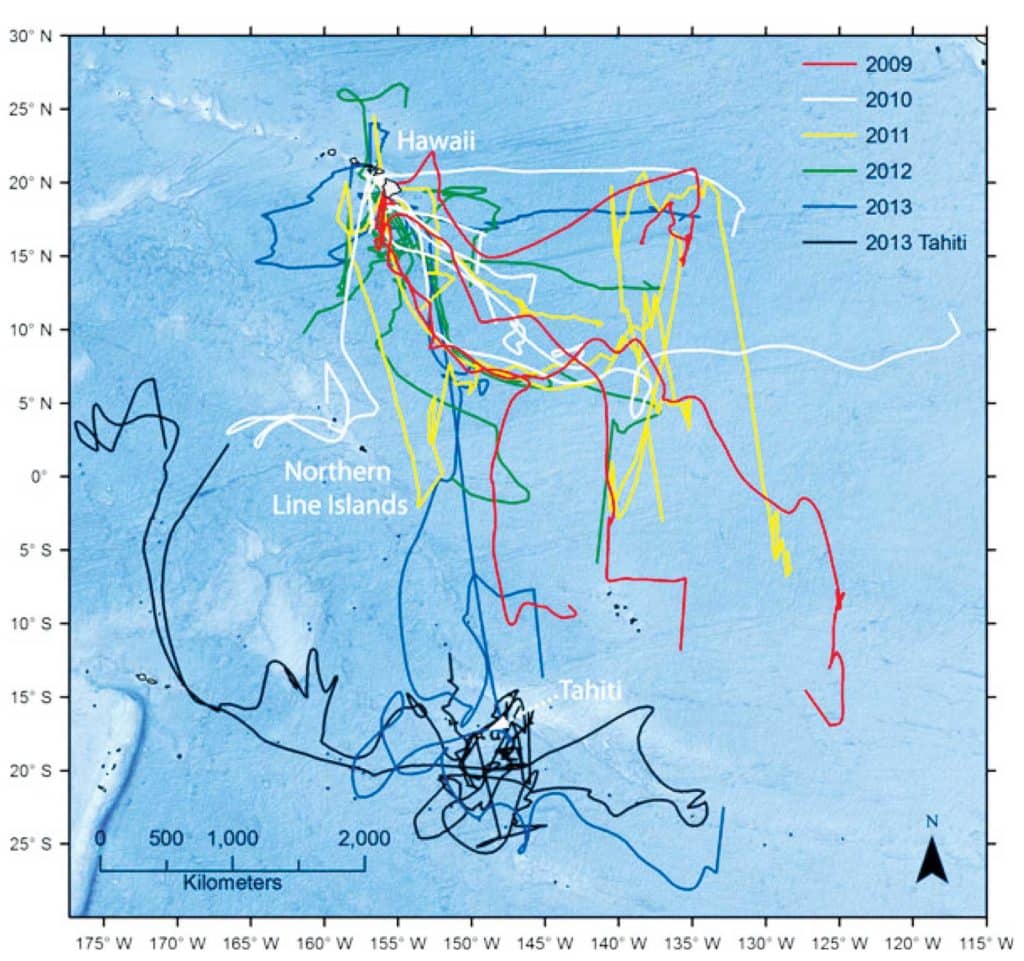
The paper also pointed out the extreme differences in location of the 77-degree isocline during the different phases of the ENSO cycle. During the 2009 El Niño event, the 77-degree isocline’s western boundary was 123 degrees West, while it was 165 degrees West during the following year’s La Niña. That’s a difference of 3,106 miles. So in addition to El Niño events being favorable for transequatorial movement, they might allow marlin to cross the equator much farther to the east than neutral ENSO and certainly La Niña conditions.
The presence of oceanographic barriers, such as the one documented in this paper, could have important implications for the population dynamics and migratory behavior of this species, particularly if it hinders important feeding or reproductive migrations. Other recently published research indicates that the frequency of extreme El Niño and La Niña events might be on the rise. The authors of that study conclude that the impact those barriers would have on blue marlin depends on duration and the longitudinal extent, as well as the nature of the latitudinal migrations exhibited by blue marlin.




